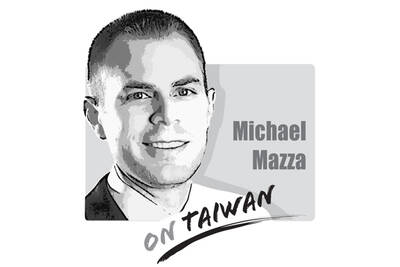Newly appointed National Science and Technology Council (NSTC) Minister Wu Cheng-wen (吳誠文) and his deputies met with the local press corps for the first time on Wednesday last week after President William Lai (賴清德) and Vice President Hsiao Bi-khim (蕭美琴), as well as the new Cabinet led by Premier Cho Jung-tai (卓榮泰) were sworn into office on Monday. On Thursday, the NSTC appointees answered questions at a meeting of the Legislative Yuan’s Education and Culture Committee.
On the two occasions, Wu said that the mission of the council — a top government agency guiding the nation’s development in science and technology — is to expand Taiwan’s technological advancement and economic development to the entire society and achieve “balanced and rapid” growth. He said the council would pursue greater cross-departmental and inter-ministerial cooperation to apply artificial intelligence (AI) and digitalization to all industries and propose an action plan within three months, and that transforming the machine tool industry into smart manufacturing would be one of its first tasks.
Wu said that transforming traditional industries and services would help solve the nation’s labor shortage and ensure balanced regional development. However, he also said that an important mission of the council is to provide long-term assistance and resources for basic research. Wu said that the council would never sacrifice academic development for industrial advancement.
It is clear that almost all of the policy priorities revolve around the local semiconductor industry and the information and communications technology (ICT) industry — two of the nation’s pillar industries, while enhancing Taiwan’s edge in science and technology industry is the council’s top priority.
However, it is still unclear what the council would do to improve the nation’s basic research. This highlights a perennial problem of Taiwan’s science and technology development in that resource allocation is heavily tilted toward industrial technology, with limited investment in basic research.
The most recent available statistics compiled by the council showed that research and development (R&D) spending nationwide totaled NT$898 billion (US$27.9 billion) in 2022, accounting for 3.96 percent of Taiwan’s GDP, the highest ever.
Of the R&D expenditure, technology development totaled NT$654 billion, accounting for 72.83 percent of the total, while about NT$175.4 billion went to applied research, or 19.53 percent. However, basic research only amounted to NT$68.5 billion, or 7.63 percent of total R&D spending that year.
Funding for basic research in other major economies generally accounts for 10 percent or more of their national R&D budgets. If only a small portion of the nation’s overall spending on scientific and technological development goes toward fundamental research, Taiwan’s long-term competitiveness could be undermined.
Unfortunately, the issue of more government resources being invested in basic research that the private sector cannot provide, and that competent people must be put in charge of the work, remains unresolved, despite several changes of leadership at the council and its predecessors, the National Science Council (from 1969 to 2014) and the Ministry of Science and Technology (from 2014 to 2022).
Over the past 30 to 40 years, the nation’s high-tech industry has excelled and become a major hub for semiconductor and ICT industries. However, with increasingly fierce competition from other countries and the rapid development of new technologies, pressure on the local high-tech industry is increasing fast.
Against this backdrop, the council’s new leadership should provide a clear vision on investment in basic research, as scientific and technological innovation, and knowledge accumulation are the foundation of sustainable industrial development.

Taiwan has lost Trump. Or so a former State Department official and lobbyist would have us believe. Writing for online outlet Domino Theory in an article titled “How Taiwan lost Trump,” Christian Whiton provides a litany of reasons that the William Lai (賴清德) and Donald Trump administrations have supposedly fallen out — and it’s all Lai’s fault. Although many of Whiton’s claims are misleading or ill-informed, the article is helpfully, if unintentionally, revealing of a key aspect of the MAGA worldview. Whiton complains of the ruling Democratic Progressive Party’s “inability to understand and relate to the New Right in America.” Many
The Centers for Disease Control and Prevention (CDC) earlier this month raised its travel alert for China’s Guangdong Province to Level 2 “Alert,” advising travelers to take enhanced precautions amid a chikungunya outbreak in the region. More than 8,000 cases have been reported in the province since June. Chikungunya is caused by the chikungunya virus and transmitted to humans through bites from infected mosquitoes, most commonly Aedes aegypti and Aedes albopictus. These species thrive in warm, humid climates and are also major vectors for dengue, Zika and yellow fever. The disease is characterized by high fever and severe, often incapacitating joint pain.
In nature, there is a group of insects known as parasitoid wasps. Their reproductive process differs entirely from that of ordinary wasps — the female lays her eggs inside or on the bodies of other insects, and, once hatched, the larvae feed on the host’s body. The larvae do not kill the host insect immediately; instead, they carefully avoid vital organs, allowing the host to stay alive until the larvae are fully mature. That living reservoir strategy ensures a stable and fresh source of nutrients for the larvae as they grow. However, the host’s death becomes only a matter of time. The resemblance
Most countries are commemorating the 80th anniversary of the end of World War II with condemnations of militarism and imperialism, and commemoration of the global catastrophe wrought by the war. On the other hand, China is to hold a military parade. According to China’s state-run Xinhua news agency, Beijing is conducting the military parade in Tiananmen Square on Sept. 3 to “mark the 80th anniversary of the end of World War II and the victory of the Chinese People’s War of Resistance Against Japanese Aggression.” However, during World War II, the People’s Republic of China (PRC) had not yet been established. It